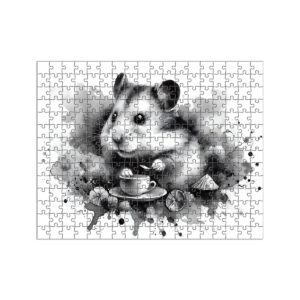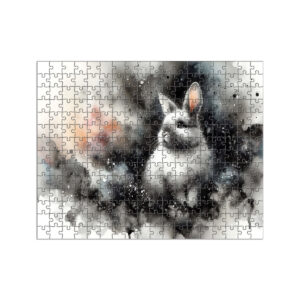
Explore & Play
Discover interesting topics and solve the accompanying crossword puzzle.
Measurement Crossword | Units of Measurement
Table of Contents
Welcome to our exploration of units of measurement! To make the most of this experience, we invite you to start with our Measurement crossword. It’s a fun way to test your knowledge and get acquainted with key terms. After you’ve tackled the crossword, dive into the comprehensive article that follows to deepen your understanding of these concepts. Alternatively, if you’re new to the topic, you might find it helpful to read the article first and then return to the crossword to reinforce your learning. Enjoy the journey through measurement with us!
Measurement Crossword
You can either fill in the crossword puzzle directly on this page or click the button in the bottom right corner to print it for free.

Understanding Units of Measurement: Guide to Everyday and Scientific Metrics
1. Units of Length
1.1 Metric Units
Length is one of the most basic measurements, essential for describing the size of objects and distances between points. The metric system, which is widely used around the world, includes several units for measuring length.
Meter: The meter is the fundamental unit of length in the metric system. It is used globally to measure various objects, from the height of a person to the dimensions of a building.
Centimeter: The centimeter is a smaller metric unit, often used in everyday measurements. For instance, when measuring the length of a pencil or the height of a child, centimeters provide a more manageable scale than meters.
Millimeter: Even smaller than the centimeter, the millimeter is used for precise measurements. This unit is crucial in fields such as engineering and manufacturing, where exact dimensions are necessary for the functionality of parts and machinery.
Micrometer: A micrometer measures extremely small lengths, often used in scientific research and quality control. It is essential in fields like material science and microscopy, where tiny dimensions need to be measured accurately.
Nanometer: At an even smaller scale, the nanometer is used to measure lengths on the atomic scale. This unit is vital in nanotechnology and chemistry, where understanding the size of molecules and atoms is crucial.
1.2 Imperial Units
In contrast, some regions, particularly the United States, use imperial units for length measurements.
Inch: The inch is a small unit frequently used in the US for measuring shorter lengths. It is commonly used in everyday contexts, such as measuring the dimensions of a TV screen or a piece of furniture.
Foot: Equal to 12 inches, the foot is a unit used for measuring various lengths. It is commonly used in construction and real estate to describe room sizes and building dimensions.
Yard: A yard is equivalent to 3 feet, used for measuring larger distances. For example, lawns and sports fields are often measured in yards, making it a practical unit for outdoor measurements.
Mile: Although not included in the crossword, the mile is often used for longer distances, especially in the US and the UK. It is commonly used to measure distances traveled by vehicles or the length of a race.
1.3 Astronomical Units
For measuring vast distances in space, astronomers use specialized units.
Light Year: A light year measures the distance light travels in one year, approximately 5.88 trillion miles. This unit is used to express the enormous distances between celestial objects, such as stars and galaxies.
Parsec: Another astronomical unit, the parsec, is used for even larger distances. One parsec equals about 3.26 light years, making it a useful unit for measuring distances in interstellar space.
2. Units of Volume
2.1 Metric Units
Volume measurements are crucial for quantifying the space that an object occupies or the capacity of containers. Metric units provide a standardized way to measure volume.
Liter: The liter is the standard metric unit for volume. It is commonly used to measure liquids, such as beverages and fuel. For example, a bottle of soda or a gallon of milk is often described in liters.
Milliliter: A milliliter is a smaller unit of volume, frequently used in cooking and medicine. It is ideal for measuring small quantities, such as medication doses or ingredients in a recipe.
2.2 Imperial Units
In countries that use imperial units, different measurements are employed for liquid volume.
Gallon: The gallon is a larger unit used for measuring liquid volumes. It is commonly used in the US to describe quantities of gasoline or milk. There are different gallon measurements, such as the US gallon and the UK gallon.
Quart: A quart is equal to ¼ gallon, often used for liquids like milk or oil. It is a convenient unit for measuring moderate quantities.
Pint: Half of a quart, the pint is used for various liquid measurements, such as in the food and beverage industry. Pints are commonly used to measure beer or milk.
Fluid Ounce: The fluid ounce is a smaller unit for liquid volume, often used in cooking and beverage measurements. It is especially useful for precise measurements in recipes.
3. Units of Weight
3.1 Metric Units
Weight measurements help us determine how heavy an object is, and different units are used across systems.
Gram: The gram is the basic unit of mass in the metric system. It is used globally to measure lightweight objects, such as ingredients in recipes or small packages.
Kilogram: A kilogram is a larger unit of mass, used for heavier objects. It is commonly used to measure body weight, groceries, and larger items.
3.2 Imperial Units
Imperial units are also used for weight measurements, particularly in the US.
Ounce: The ounce is a small unit of weight, used for measuring lighter objects. It is commonly used in food packaging and cooking.
Pound: Equal to 16 ounces, the pound is used for heavier items. It is a standard unit for measuring body weight, produce, and other goods.
4. Units of Energy and Power
4.1 Energy
Measuring energy is crucial for understanding various physical phenomena and technological processes.
Joule: The joule is the standard unit of energy in the metric system. It measures the amount of energy required to perform work, such as heating or moving an object.
Calorie: The calorie is commonly used in food and nutrition to measure energy. It quantifies the amount of energy provided by food and beverages, helping us understand dietary needs.
4.2 Power
Power measurements help us understand energy usage and efficiency.
Watt: The watt is the unit used to measure power, representing the rate at which energy is used or transferred. It is commonly used to describe the power of electrical devices, such as light bulbs and appliances.
5. Temperature Scales
5.1 Metric Scale
Temperature measurements are fundamental in weather forecasting and scientific research.
Celsius: The Celsius scale is commonly used around the world to measure temperature. It is based on the freezing and boiling points of water, making it intuitive for everyday use.
5.2 Other Scales
Different temperature scales are used in various contexts.
Fahrenheit: Predominantly used in the US, the Fahrenheit scale measures temperature based on a different set of reference points. It is often used for weather reports and household thermometers.
Kelvin: The Kelvin scale is used in scientific contexts to measure absolute temperature. It is crucial for experiments and calculations in fields such as physics and chemistry.
6. Units of Pressure
6.1 Metric Units
Pressure measurements are essential for understanding physical processes and conditions.
Pascal: The pascal is the standard unit of pressure in the metric system. It measures the force applied over a unit area, commonly used in scientific and engineering contexts.
Bar: The bar is another unit used for measuring pressure, especially in meteorology and various industrial applications. One bar is approximately equal to atmospheric pressure at sea level.
7. Sound and Light Measurements
7.1 Sound
Measuring sound intensity is essential for various applications in science and technology.
Decibel: The decibel measures sound intensity and is used to quantify noise levels. It is commonly used in acoustics and audio engineering to assess sound levels in different environments.
7.2 Light
Light measurements help us understand brightness and illumination.
Lux: Lux measures light intensity on a surface, helping us assess lighting conditions in different spaces. It is commonly used in photography and interior design.
Lumen: Lumen measures the total amount of visible light emitted by a source. It is used to describe the brightness of light bulbs and other lighting fixtures.
8. Scientific Measurements
8.1 Length and Energy
Scientific research often requires precise measurements.
Angstrom: The angstrom measures very small lengths, used in physics and material science to describe atomic and molecular dimensions.
Planck Length: The Planck length is a fundamental unit of length in quantum theory. It represents the smallest measurable length, crucial for understanding the fabric of space-time.
8.2 Earth and Space
Units for measuring geological and astronomical phenomena are also important.
Richter Scale: The Richter scale measures earthquake magnitude, providing a way to quantify the energy released during seismic events. It is essential for understanding and responding to earthquakes.
9. The Role of Measurement in Technology and Innovation
9.1 Precision in Engineering
Engineering relies heavily on precise measurements for design and functionality. Accurate measurements ensure that components fit correctly, systems operate efficiently, and products meet quality standards.
9.2 Innovations in Science
Scientific discoveries and innovations depend on accurate measurement tools and units. From developing new technologies to exploring the universe, precise measurements are crucial for advancing knowledge and capabilities.
10. Summary
Understanding various units of measurement enhances our ability to interpret and interact with the world around us. Whether we are measuring a recipe ingredient, designing a building, or exploring the universe, accurate measurements are essential. To reinforce your understanding of these measurement units, consider solving our measurement-themed crossword puzzle. It’s a fun and engaging way to familiarize yourself with these terms and their applications.
Share to...
I hope you enjoy the content.
Want to receive our daily crossword puzzle or article? Subscribe!
You may also be interested in
Share to…
Want to receive our daily crossword puzzle?
-
Jigsaw Puzzles
Whimsical Hamster Jigsaw Puzzle in Watercolor Style 250 | 300 | 500 Brikker
kr 348,00 – kr 439,00Price range: kr 348,00 through kr 439,00 Select options This product has multiple variants. The options may be chosen on the product page -
Jigsaw Puzzles
Chinese Zodiac Serpent Watercolor Jigsaw Puzzle 250 | 300 | 500 Pieces
kr 348,00 – kr 439,00Price range: kr 348,00 through kr 439,00 Select options This product has multiple variants. The options may be chosen on the product page -
Jigsaw Puzzles
Chinese Zodiac Rabbit Jigsaw Puzzle – Ink Art Series 250 | 300 | 500 Pieces
kr 348,00 – kr 439,00Price range: kr 348,00 through kr 439,00 Select options This product has multiple variants. The options may be chosen on the product page

















